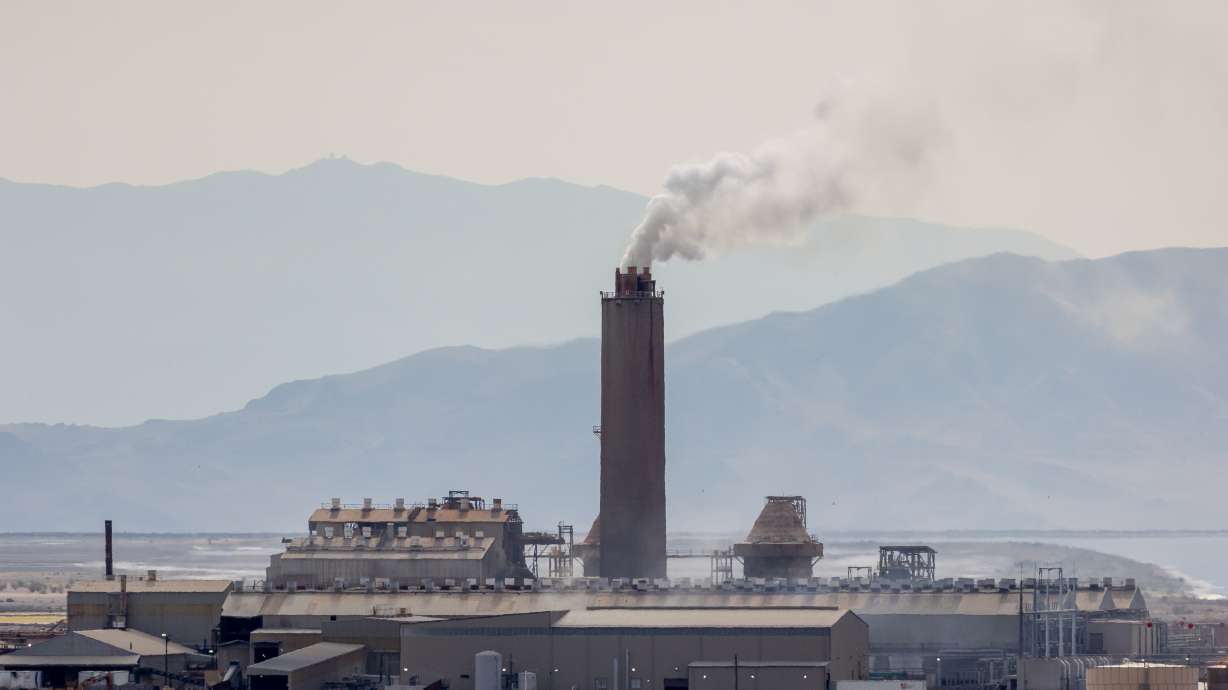Estimated read time: 3-4 minutes
This archived news story is available only for your personal, non-commercial use. Information in the story may be outdated or superseded by additional information. Reading or replaying the story in its archived form does not constitute a republication of the story.
SALT LAKE CITY — A bill that sets up a study of halogen emissions, such as bromine and chlorine, cleared its first legislative test Wednesday.
Members of the Utah House Natural Resources, Agriculture and Environment Committee unanimously voted in favor of HB220 after a last-second amendment to the bill, sponsored by Rep. Andrew Stoddard, D-Sandy.
Stoddard originally introduced the bill to the Utah House of Representatives on the first day of the 2023 Utah legislative session, Jan. 17. It sought to provide an "incentive-based legislative package" that would aim to reduce air pollution along the Wasatch Front by 50% by 2030, according to the environmental nonprofit o2 Utah, which helped push for the bill.
But Stoddard eventually rewrote the proposed legislation to address the results of a breakthrough National Oceanic and Atmospheric Administration study on air quality last month, which found that high levels of chlorine and bromine boosted Wasatch Front and northern Utah particulate matter levels by as much as 25% during a study period in 2017. It also pinpointed the US Magnesium plant in Tooele County as the major source of the chemicals.
The bill aims to require the Utah Division of Air Quality to "conduct an inventory and prepare a plan related to reducing certain emissions" to find other sources of bromine in the northern half of the state and to find ways to regulate and reduce those emissions.
Bromine is an element naturally found in the earth's crust and in seawater that can cause health problems if transmitted in high-enough doses, according to the Centers for Disease Control and Prevention. However, neither Utah nor the Environmental Protection Agency requires facilities to report bromine emissions as they do for chlorine, so it's unclear what an acceptable amount of it should be in the atmosphere.
"Utah is really unique, obviously, with our inversion problem, geography and what we've got going on. ... This bill would allow Utah to get out ahead of the EPA and take it into our own hands," Stoddard explained to the committee during Wednesday's meeting.
Utah Division of Air Quality officials told KSL.com last month that halogen emissions have the potential to impact summertime ozone and wintertime PM2.5 pollution along the northern Wasatch Front.
The agency is currently working on a saturation study in partnership with Utah State University to improve air quality along the Great Salt Lake and Wasatch Front, Bryce Bird, the division's director, told the committee Wednesday. The project, which began this winter, is focused on "halogen chemistry" and how it plays into poor air quality.
Bird added that he supports the effort "to understand more" about the issue and how air quality can be improved. The study could even help provide more long-term data to pinpoint the exact sources of halogen emissions.
After a long line of questions and comments, Rep. Tim Jimenez, R-Tooele, proposed an amendment to the bill, swapping bromine for all halogen sources, including bromine, chlorine, fluorine and iodine.
"I don't want to just go after bromine. I think we should study all halogens," he said. "I'd like a good study of what's going on in the (region) so we can understand how this is affecting our air quality — but that way we're not targeting any one chemical, we're hitting a group of chemicals within that group (of) halogens."
Stoddard had no objections to the changes. The rest of the committee also agreed, voting 10-0 in favor of the bill advancing to the House floor for a broader vote.
The bill must clear both the Utah House and Senate before it becomes law. The legislative session wraps up on March 3.









